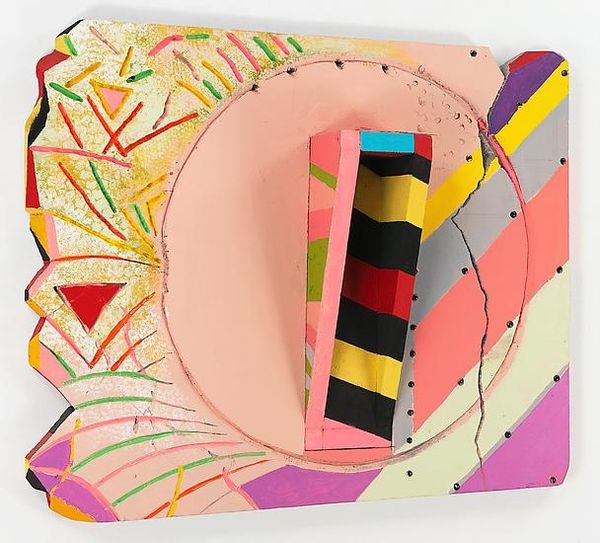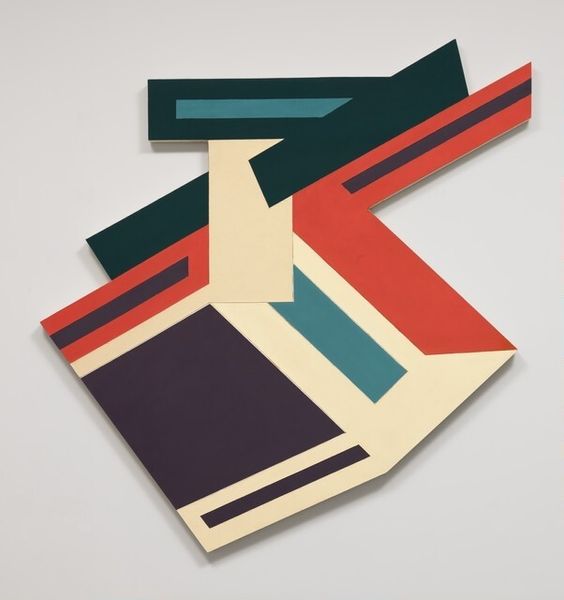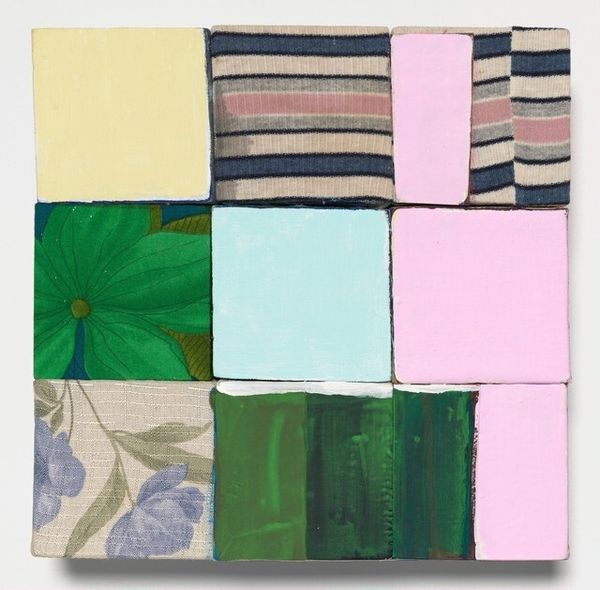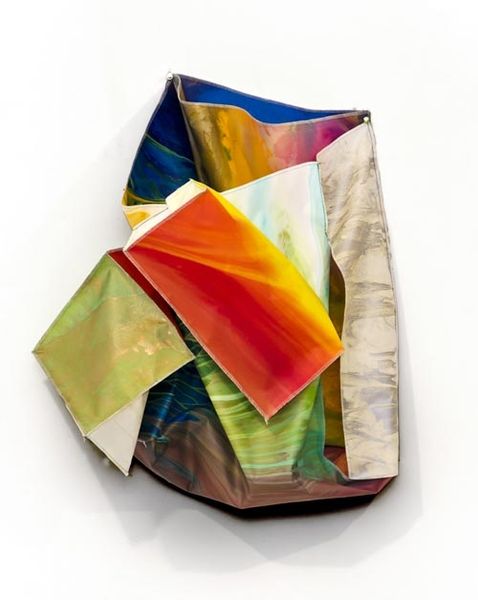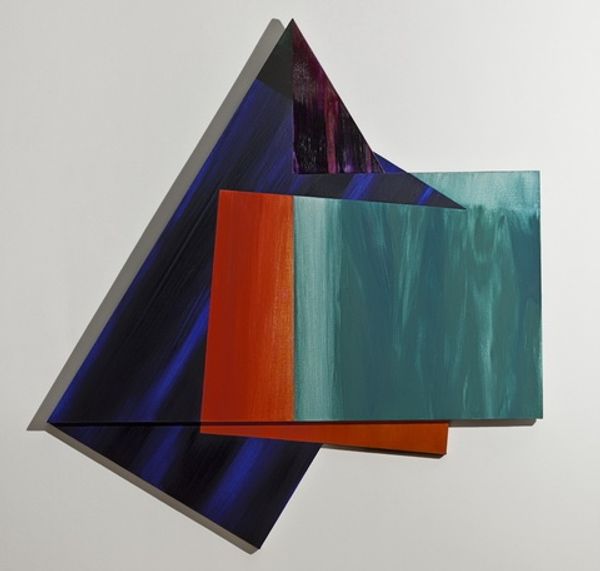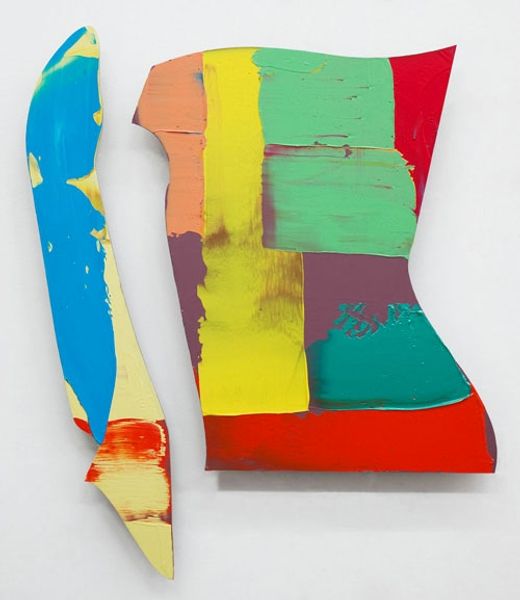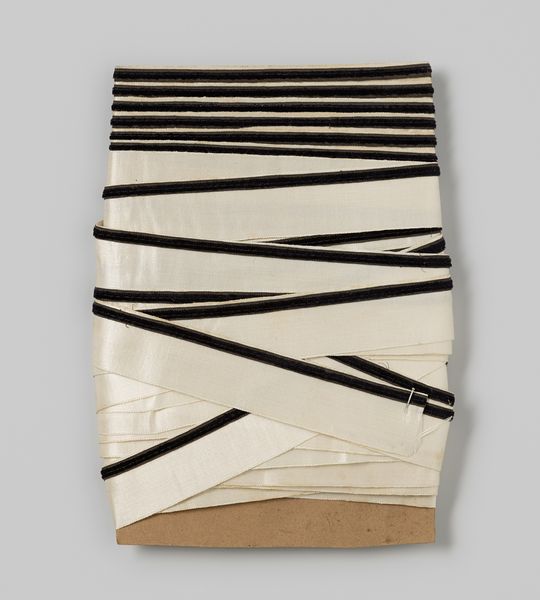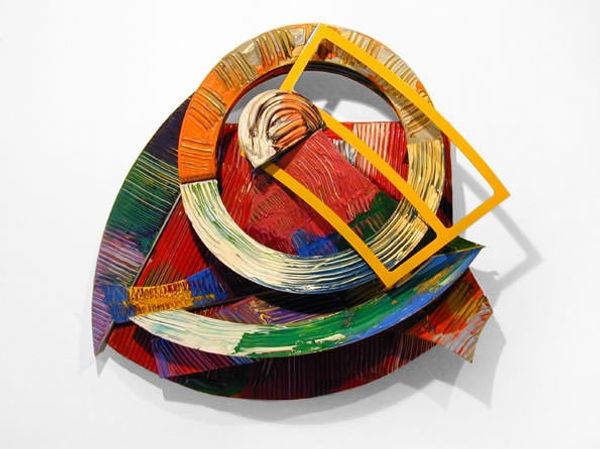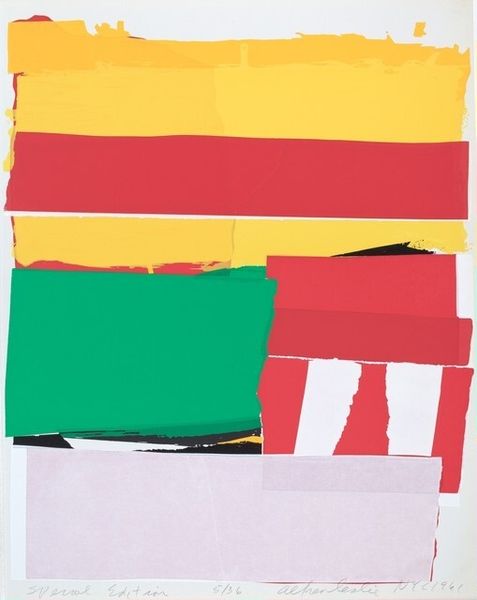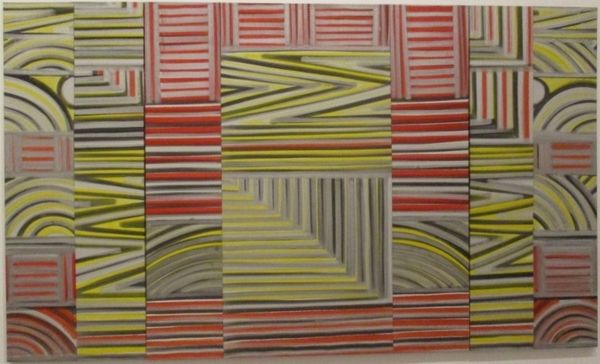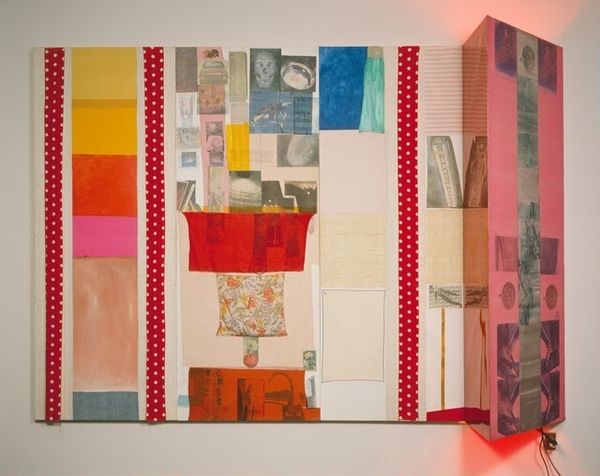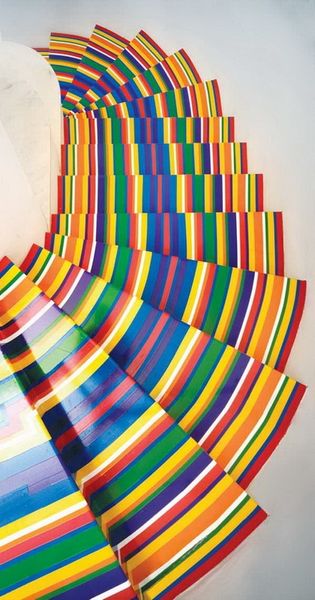
Dimensions: overall: 363.2 x 383.5 x 76.2 cm (143 x 151 x 30 in.)
Copyright: National Gallery of Art: CC0 1.0
Editor: Here we have Frank Stella’s “La scienza della fiacca (4x)”, created in 1984 using mixed media. It’s quite vibrant and explosive, with geometric forms jutting out. What strikes you when you look at it? Curator: Immediately, I see Stella engaging in a conversation with the legacy of abstract expressionism, but doing so in a way that subverts its more romantic notions of artistic creation. Consider the title - "The Science of Laziness." It’s a tongue-in-cheek acknowledgement, perhaps, of how his work challenges conventional ideas about artistic labor. Does that contrast between labor and leisure become apparent to you? Editor: It does now that you mention it. I see these very deliberate lines and shapes alongside what appears like more haphazard brushstrokes. It's like he's mixing planning and... spontaneity? Curator: Exactly! Stella's combining painting with sculpture disrupts traditional art categories. In the 80's, the art world saw a return to painting after minimalism's dominance. Stella’s works challenged the very structures that defined the art market and the critical establishment. He questions how value is assigned. Do you notice how the work projects itself into the viewer’s space, blurring boundaries? Editor: Absolutely. It breaks away from the flat plane and demands attention. It’s almost confrontational in its presence. It really makes me wonder what viewers at the time thought of his repsonse to traditional art models. Curator: And that’s a critical element to consider. Stella used the visual language of industry and construction, incorporating what some might've perceived as mundane materials into the high art sphere, a comment on the relationship between art, labor and the societal structures surrounding art-making itself. Editor: I never thought about it in those terms. It’s fascinating how the socio-political context shaped how an artwork, on the surface just colorful and abstract, speaks to the value systems in place at the time of creation! Curator: Indeed! Thinking about the history, it is important to go beyond a quick interpretation to look at how an artwork functioned and what its presence represents for contemporary society.
Comments
No comments
Be the first to comment and join the conversation on the ultimate creative platform.
